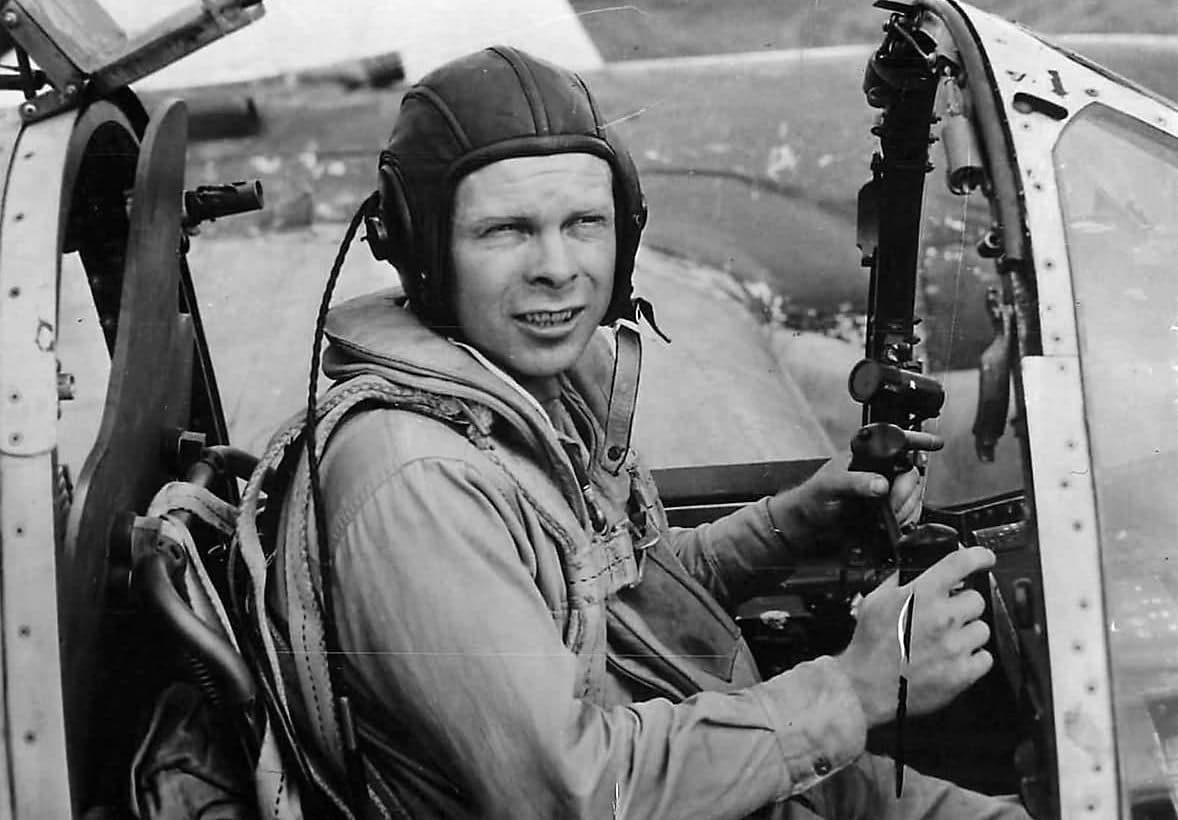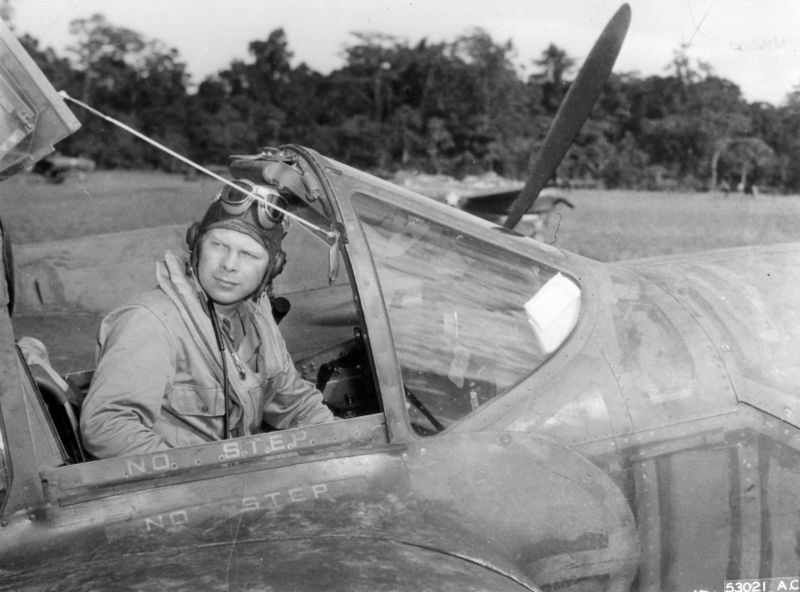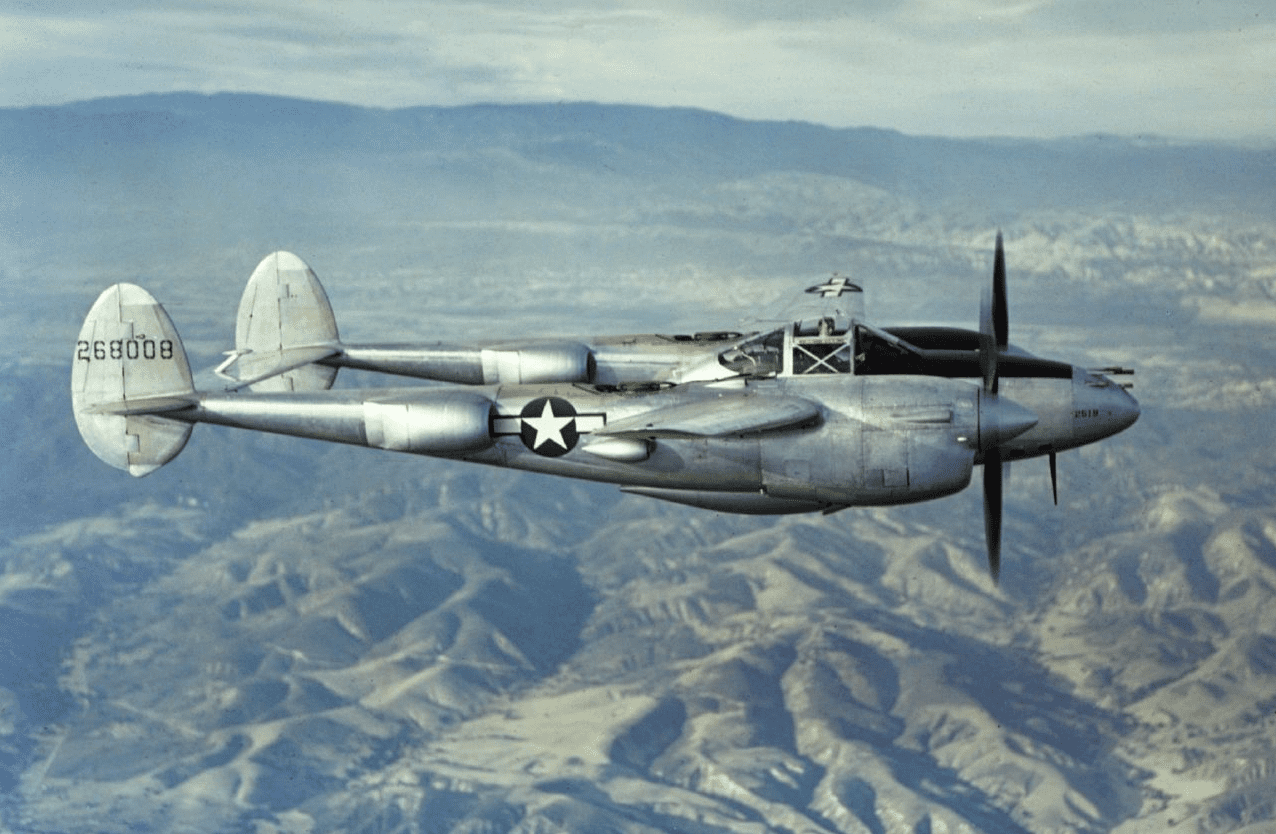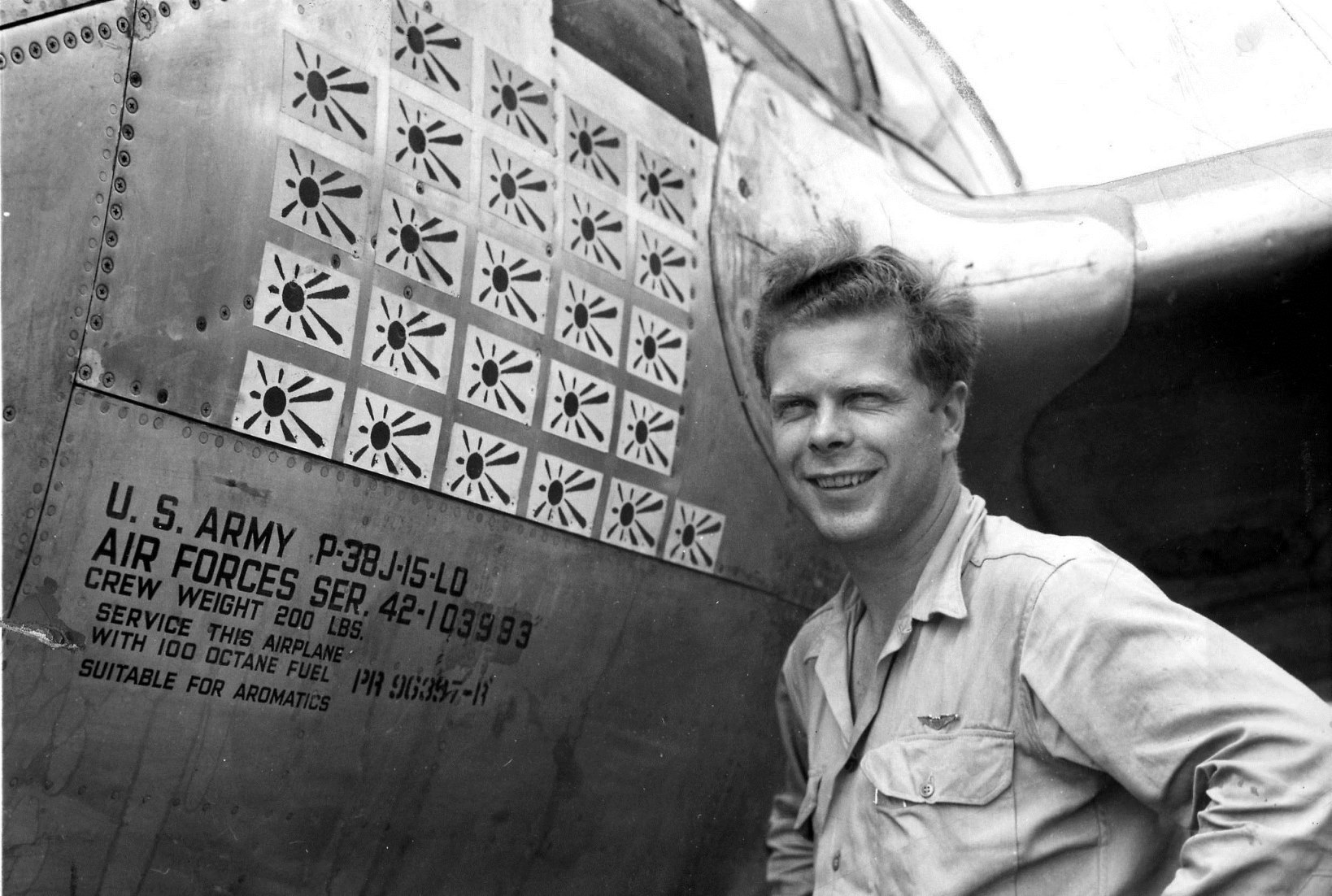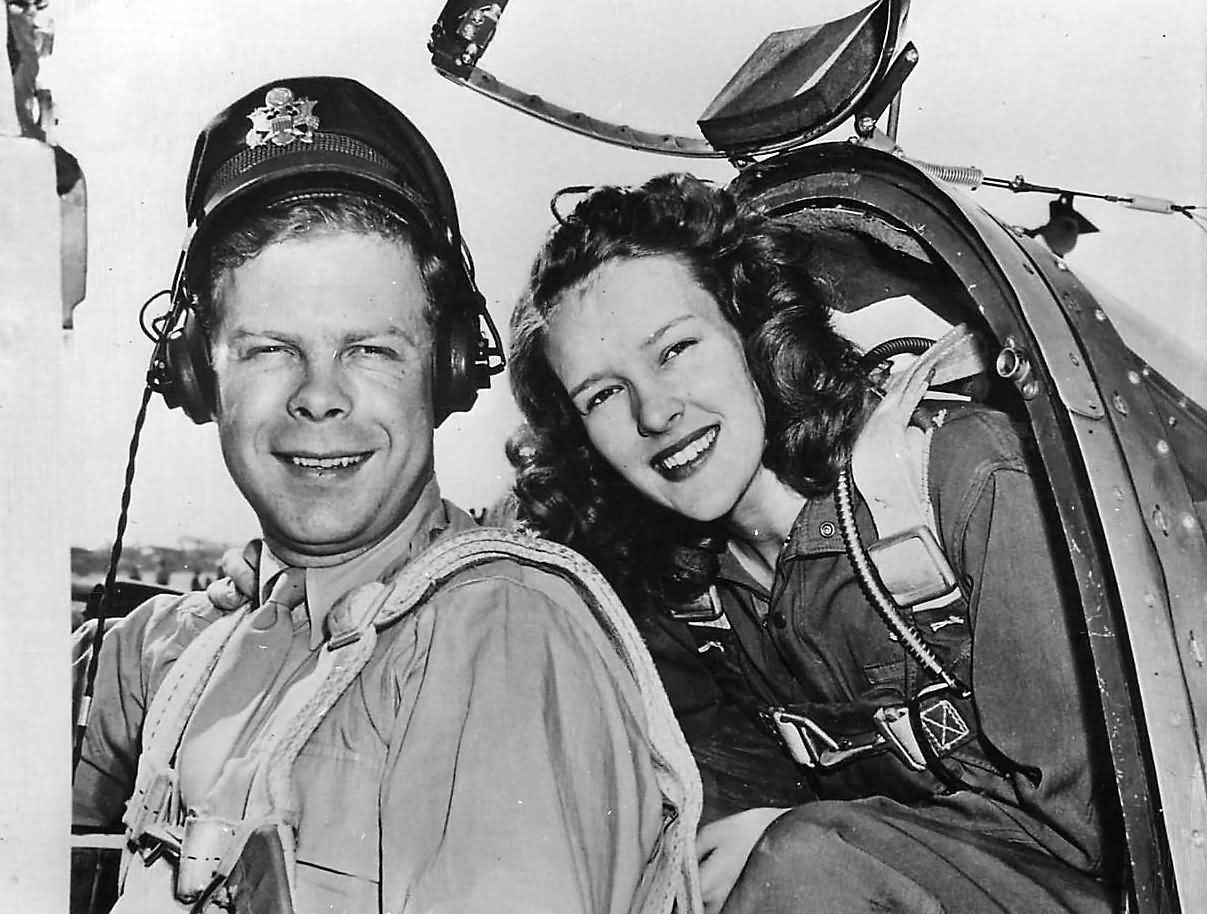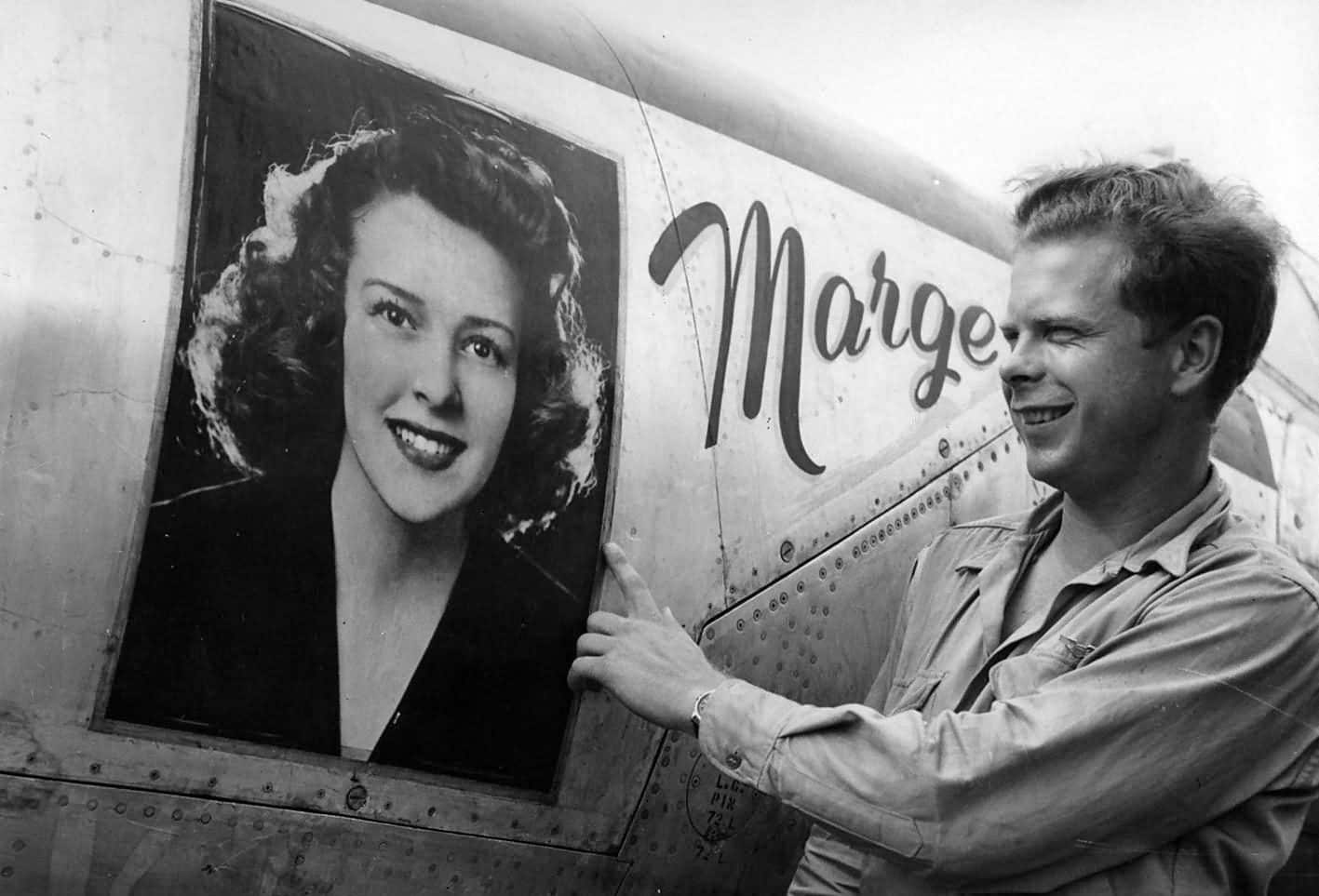Dick Bong Got the Very Most Out of Both His P-38 Lightning and Himself. He became the Ace of Aces
In the history of aerial combat, the highest scoring American pilot, Richard Ira Bong, who scored a total of 40 victories, doesn’t even crack the top several hundred. Five Romanians, six Finns, ten Russians, five Japanese, 373 Germans, and a Croatian outscored him. So why was he called the ace of aces?
Seven other pilots tied Bong with 40 victories, including the top Royal Air Force/Commonwealth ace, Marmaduke “Pat” Pattle, a South African. But he was not at constant war for several years as most of the aces who outscored him were. He was out of combat for months at a time. Between 27 December 1942 and 17 December 1944, Dick Bong shot down 40 Japanese aircraft- the majority of them fighters. He was the American Ace of Aces.
Your Typical American Youth
Richard Ira Bong was born on 24 September 1920 in Superior, Wisconsin, the eldest of nine children. His parents were Carl Bong, a Swedish immigrant, and Dora Bryce, an American of Scots-English descent. He grew up on a typical Wisconsin dairy farm near Poplar, a small town in the far northwestern corner of the state.
Bong’s interest in aviation began when he observed biplanes flying near the family farm. Richard learned marksmanship at an early age. Bong attended Poplar High School beginning in 1934 and graduated from Central High in Superior in 1938. While in high school Bong built airplane models, played the clarinet in the marching band, and played hockey, basketball, and baseball.
Learning to Fly
After graduation Bong began studying at Superior State Teachers College. While enrolled there he enrolled in the Civilian Pilot Training Program and also took private flying lessons.
Bong enlisted in the US Army Air Corps Aviation Cadet Program on 29 May 1941. One of his primary flight instructors was Captain Barry Goldwater. His instructors agreed that Second Lieutenant Bong was a natural pilot.
He earned his wings and was commissioned on 19 January 1942. Bong was assigned to Luke Field in Arizona as an instructor pilot to teach gunnery until 6 May 1942, when he was assigned to the 49th Fighter Squadron (FS) of the 14th Fighter Group (FG) at Hamilton Field in California. There Bong learned to fly the aircraft with which his name would become synonymous- the Lockheed P-38 Lightning.
Bong the Infamous and Kenney’s Rebuke
After a little more than a month at Hamilton, Bong buzzed the house of a fellow pilot who had just been married. He, along with three other pilots who were allegedly flying loops around the center span of the Golden Gate Bridge, was grounded.
Bong was reprimanded by none other than General George C. Kenney, the area commander at the time, for the low level flying, looping the bridge, and blowing laundry off clotheslines in Oakland.. As Kenney himself recalls it he told Bong, “Monday morning you check this address out in Oakland and if the woman has any washing to be hung out on the line, you do it for her.
Then you hang around being useful – mowing the lawn or something – and when the clothes are dry, take them off the line and bring them into the house. And don’t drop any of them on the ground or you will have to wash them all over again. I want this woman to think we are good for something else besides annoying people. Now get out of here before I get mad and change my mind. That’s all!”
Initial Combat and Initial Victories
Kenney was impressed with Bong but grounded him anyway. As a result, he did not ship out to the UK with the 49th FS. Instead Bong was reassigned to the 84th FS of the 78th FG and shipped out to the Pacific.
General Kenney might have had a hand in that. Temporarily assigned to the 9th FS flying Curtiss P-40 Warhawks, Bong was flying out of Darwin in Australia beginning in September of 1942. While there waiting on delivery of the squadron’s P-38s, Bong flew missions with the 39th FS of the 35th FG out of Port Moresby in New Guinea. Bong’s first aerial victory occurred on 27 December 1942.
He soon rejoined the 9th FS and began flying the P-38 Lightning. He scored many of his aerial victories in bunches. Promoted to First Lieutenant in April of 1943 and to Captain in August, Bong was shipped home on leave at the end of 1943 with 16 aerial victories.
Memorable Marge and Passing Eddie
While on leave back home in Wisconsin attending his former college homecoming event, Bong met homecoming queen Marjorie Vattendahl. The two hit it off and began dating.
When Captain Bong returned to the southwest Pacific, He was issued one of the first bare-metal finish Lightnings. He named his P-38J Marge and had her photo affixed to his aircraft. Now a staff officer unattached to a squadron and able to choose his missions, Bong often flew with fellow P-38 ace Tommy Lynch and continued to score kills.
After another short furlough during which he met General Douglas MacArthur, Bong racked up numbers 26 and 27 on 12 April 1944, thereby surpassing the score of World War I ace Eddie Rickenbacker. General Kenney sent Bong home again on leave, during which time he got engaged to Marge.
Defending Himself with Panache and Home for Good
When Major Bong returned to the southwest Pacific, he was made an advanced gunnery instructor with orders to defend himself if attacked but not to seek combat. He continued to score aerial victories anyway. Two victories here, one there; pretty soon Bong was pushing 40.
General Kenney had recommended him for the Medal of Honor and MacArthur concurred. Bong was presented with the Medal on 12 December 1944 with a score of 38. He scored two more victories before being sent home for good after flying 500 combat hours over 200 combat missions. Bong’s war was over. He continued to support the War Bond effort, and he managed to find time to marry Marge. The newlyweds honeymooned in California.
Working on the First Lockheed Jets
The war was not won quite yet. Development of new weapons continued in the knowledge that the war could certainly drag on. One such weapon was the Lockheed P-80 Shooting Star, the first operational American jet-powered fighter. Getting the P-80 into production was a herculean effort, and like most aircraft development efforts in those days, there were accidents and setbacks.
The P-80 finally went into production in April of 1945. Major Bong, now back at work, was assigned to the Flight Test Section at Wright Field in Ohio to help work out the bugs in the P-80. In June of 1945, Bong began work at Lockheed’s Burbank plant.
Tragedy That Was Overshadowed by Other Events a World Away
Lockheed P-80A serial number 44-85048 took off from Palmdale runway 15 at 1450 hours. The jet was seen to emit some puffs of smoke while being unable to climb to more than 400 feet. The canopy separated and the pilot bailed out but was unable to deploy his parachute- he was too close to the ground.
Bong – Ace of Aces, perished in a crash
The jet pitched down and was destroyed on impact with the ground. The pilot, found not far from the wreck still wrapped in his parachute risers, was Major Dick Bong. He had accumulated about four hours of jet flight time over 12 flights before that 6 August 1945- a date which is often remembered for entirely different reasons. America’s Ace of Aces died the same day the first atomic bomb was dropped on Japan.
Bong: Ace of Aces Remembered
Fittingly, over the years since his death Bong has been commemorated by bridges in Wisconsin and in Australia, airports in Wisconsin, streets and theaters named after him on Air Force bases the world over, and enshrinement in the National Aviation Hall of Fame and the Wisconsin Aviation Hall of Fame.
The Air Force named a an Air Force Base in Wisconsin after him but it was never completed. Today it is the Richard Bong State Recreation Area in Wisconsin. The Richard I. Bong Veterans Historical Center in Superior, Wisconsin is housed in a structure resembling an aircraft hangar and contains a small museum, a film screening room, and a restored P-38J Lightning painted to look just like Marge.

